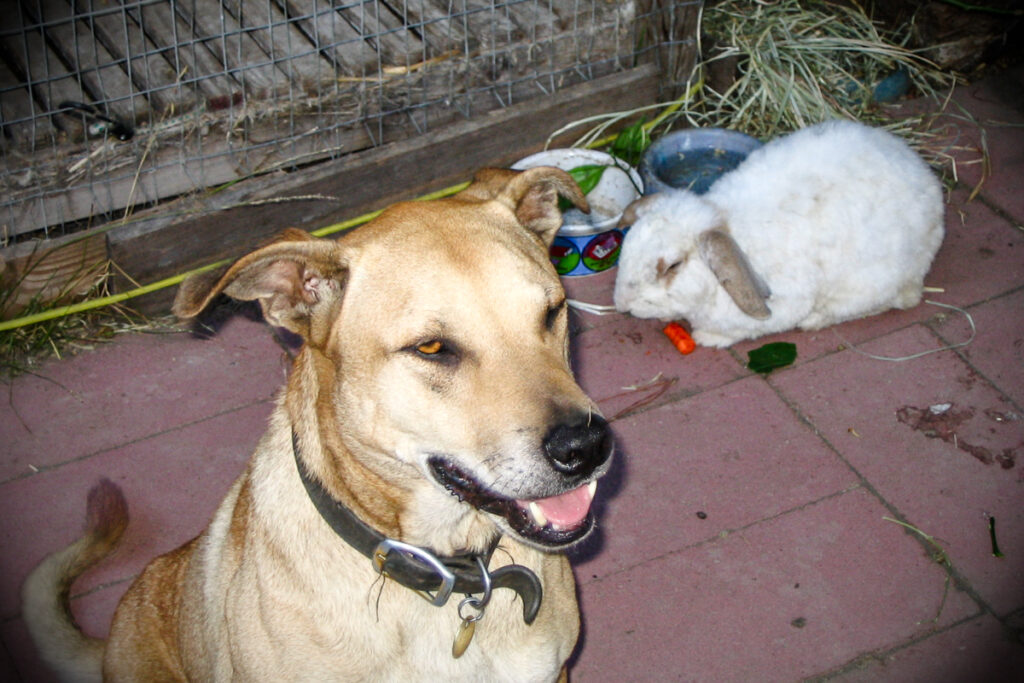More important than the dog or bunny behavior in establishing a compatible relationship is human behavior. Our job is to show our dogs how we want them to behave around our rabbits. Dog training is the best guarantee of safety for your rabbit. While you may plan to keep the animals separated by a gate or door, training your dog is insurance against disaster if that door is accidentally left open.
Learning Commands
Your dog must be responsive to the basic human commands: “down-stay,” “good dog,” “gentle,” and “off.” Since it’s absolutely crucial that the dog not chase if the rabbit runs, you must start with the following preventive setup.
1. Dog is in a puppy pen when bunnies have free run. Curious rabbits can observe an unthreatening dog, who is contained in a pen. Free-running rabbits can be observed by the dog in a non-chase setting.
2. Bunnies are in pen/cage when the dog has free run. The rabbits gradually become accustomed to the noises, smells, and-range movements of the dog. They can sniff noses and get acquainted through the safety of the fence.
3. Dog is on leash when all are out of pens. Gradually have short sessions with a short leash and lots of praise when the dog behaves well among the rabbits.
5. Daily dog-style play to expend energy away from bunnies: running, jumping, and fetching a ball. When we brought home our eight-month-old Australian shepherd, Xena, we started her in a puppy pen, as described above. We then added:
6. Participation in duties off leash. Xena began to make the rounds with us as we gave nightly feedings to the bunnies. As we talked gently, filled dishes, and stroked the bunnies, Xena mimicked our manner with gentle grooming.
7. Build on praise more than reprimand. Xena’s experience with rabbits was kept positive. Dog trainer Amy Espie had advised us to avoid situations that were known to cause frustration and introduced us in 1992 to a fundamental called “setting up for success.”2
8. Co-mingling in our presence. We took down the puppy pen and allowed Xena freedom of the house. Not wanting to risk a sudden overwhelming impulse of a young playful pup, we never left her alone with the rabbits during the fir- year. As she spent more and more time freely commingling with rabbits in our presence, we began to leave them together for short periods during their quiet times of day. PATIENCE PAYS OFF After a total of six unhurried months, we were rewarded with free running rabbits living comfortably with a young dog, who no longer required supervision and could be left alone with the rabbits for an indeterminate period of time. Read Amy’s online article3 for additional consideration.

